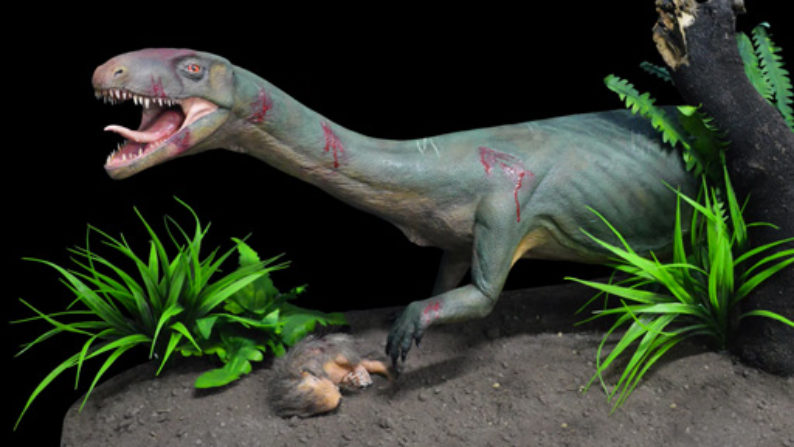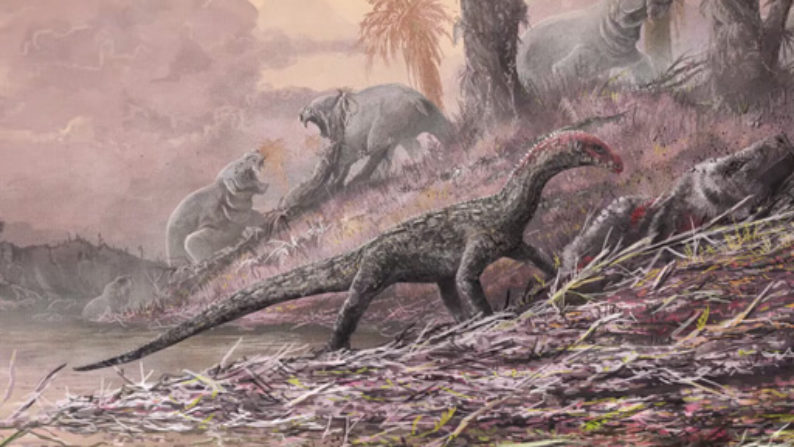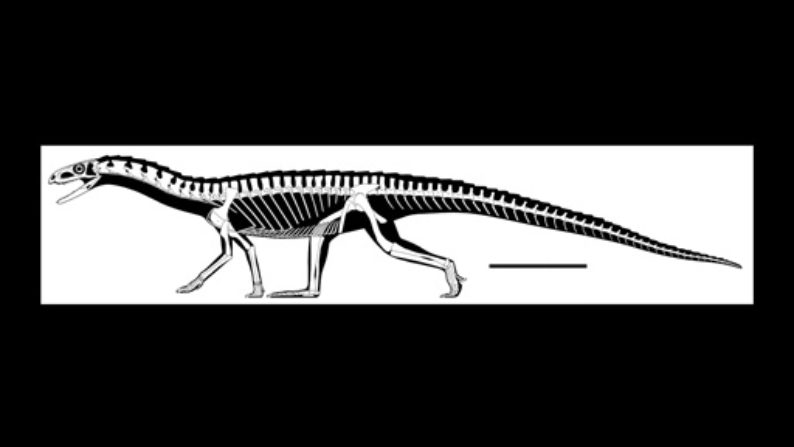
More than 10 million years before true dinosaurs appeared, an ancient predecessor roamed the earth, but it looked nothing like the dinosaurs we know today.
Teleocrater rhadinus, as the new species is named, sported a long neck and tail but walked on all fours and had ankles like a crocodile. The ancient carnivore was 7-10 feet long, 2 feet tall and weighed between 20 and 65 pounds.

The new details were uncovered by a team of researchers from Virginia Tech and their findings were published in the journal Nature. The new discovery provides a missing link in scientists’ understanding of how dinosaurs evolved, as well as what their early relatives may have looked like.
Like dinosaurs, crocodiles, and birds, Teleocrater is part of a group of animals called archosaurs. About 250 million years ago, that group split into two branches: one that would evolve into dinosaurs and birds and another that included crocodiles.

However, despite having crocodilian ankles and a low gait, Teleocrater is actually the earliest known member of the group that includes birds.
“Teleocrater is hugely exciting because it blows holes in many of our classic ideas of dinosaur origins,” said one of the study’s authors, Dr. Richard Butler in a statement.
The researchers examined specimens collected from rocks in Southern Tanzania. Though Teleocrater fossils were first discovered in 1933, some important bones were missing and researchers could not determine which group the animal belonged to at the time.
This latest study provides many of the answers researchers were looking for more than 80 years ago.
Video:
WATCH NEXT: Titanoboa: The Largest Snake the World Has Ever Known




